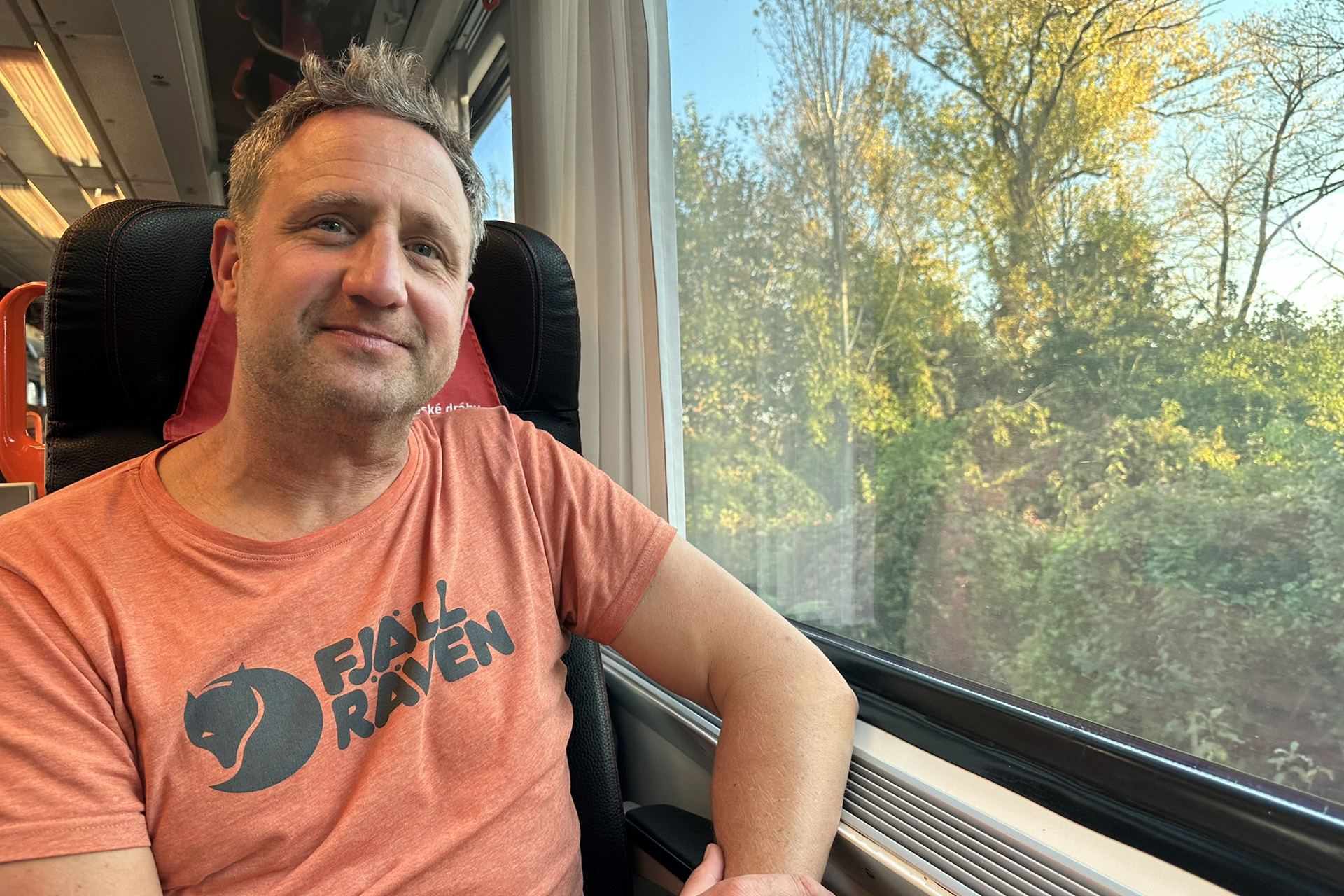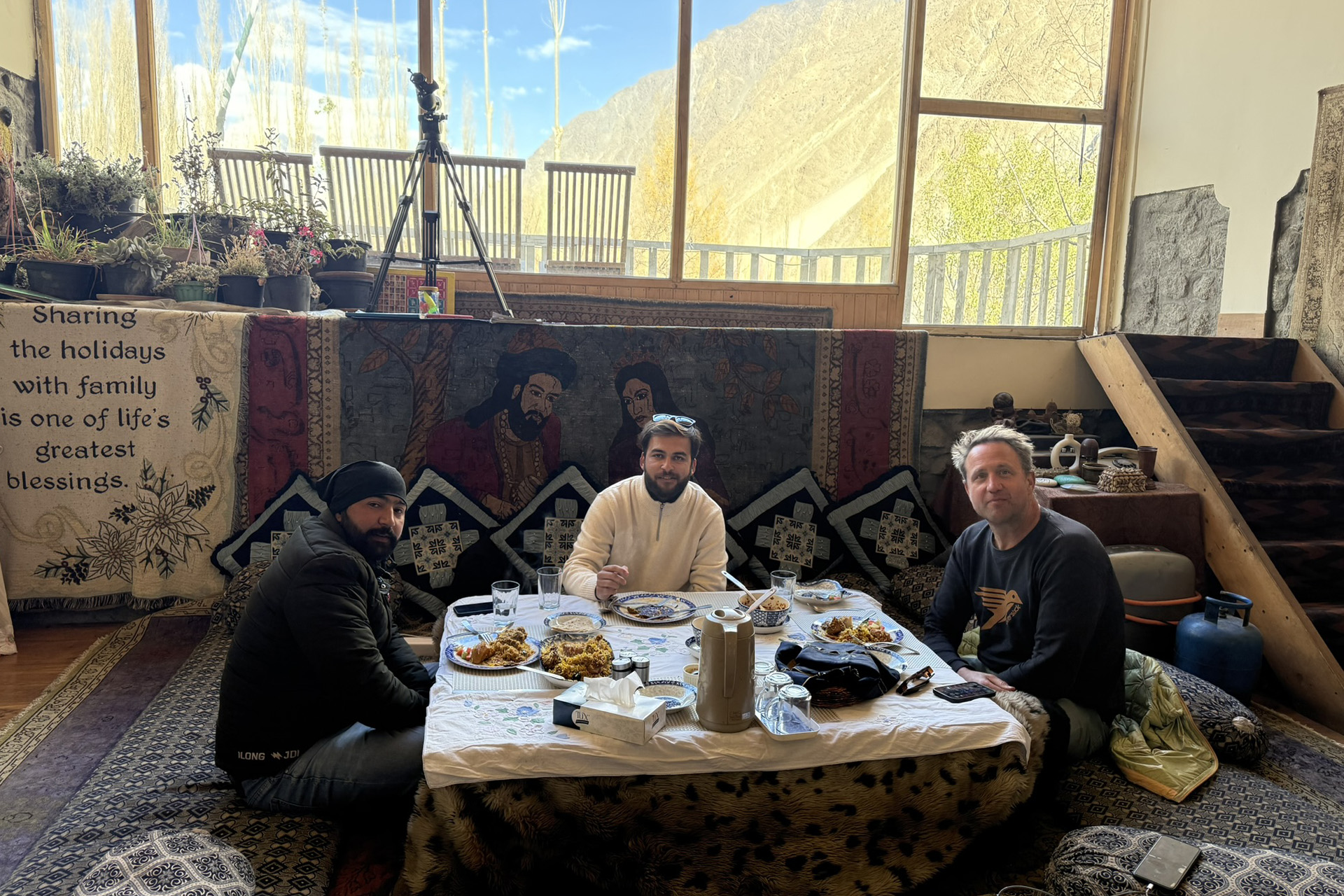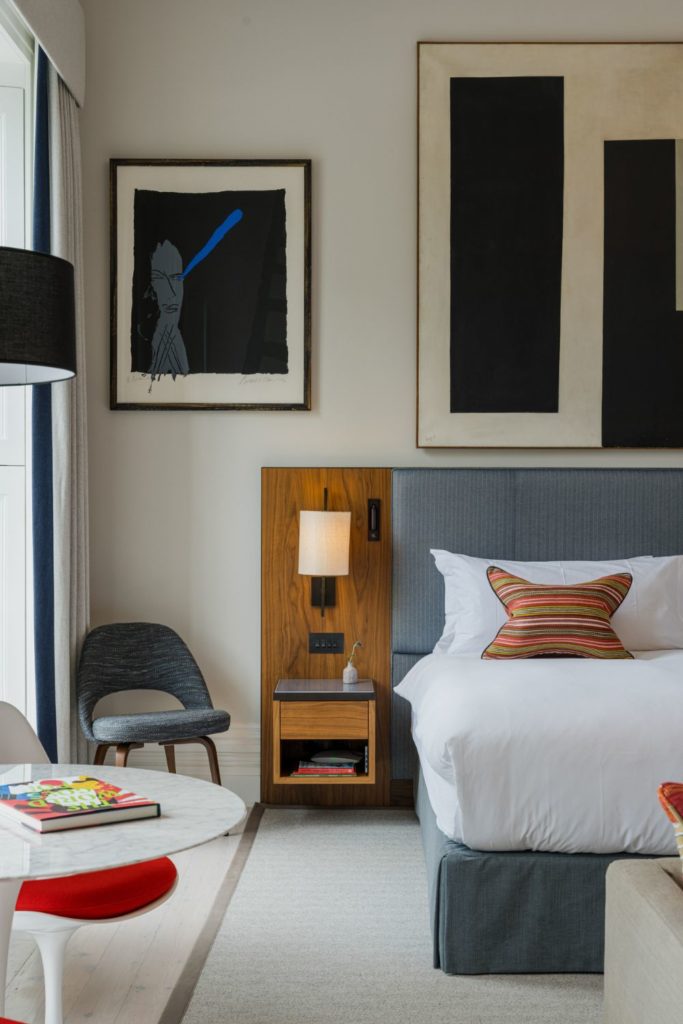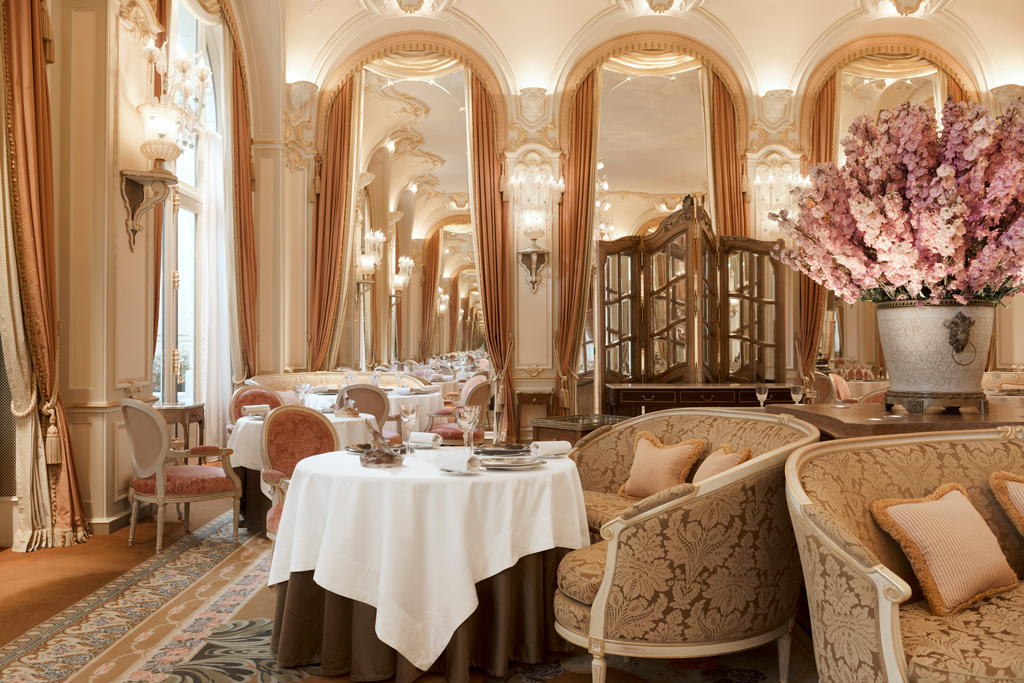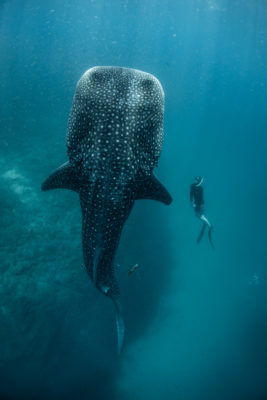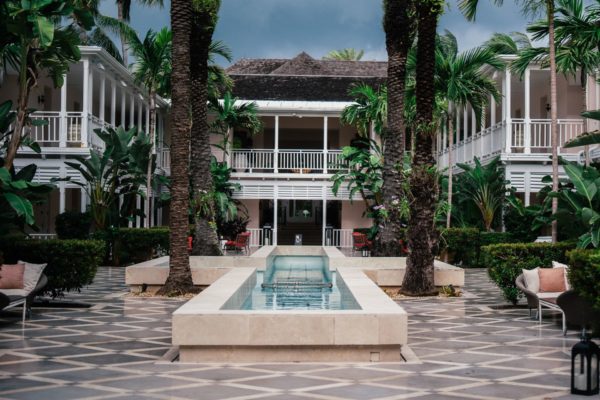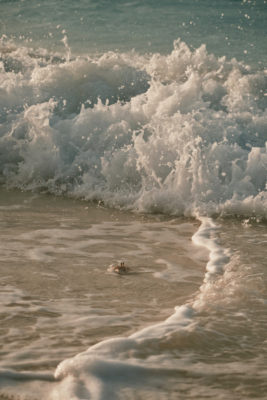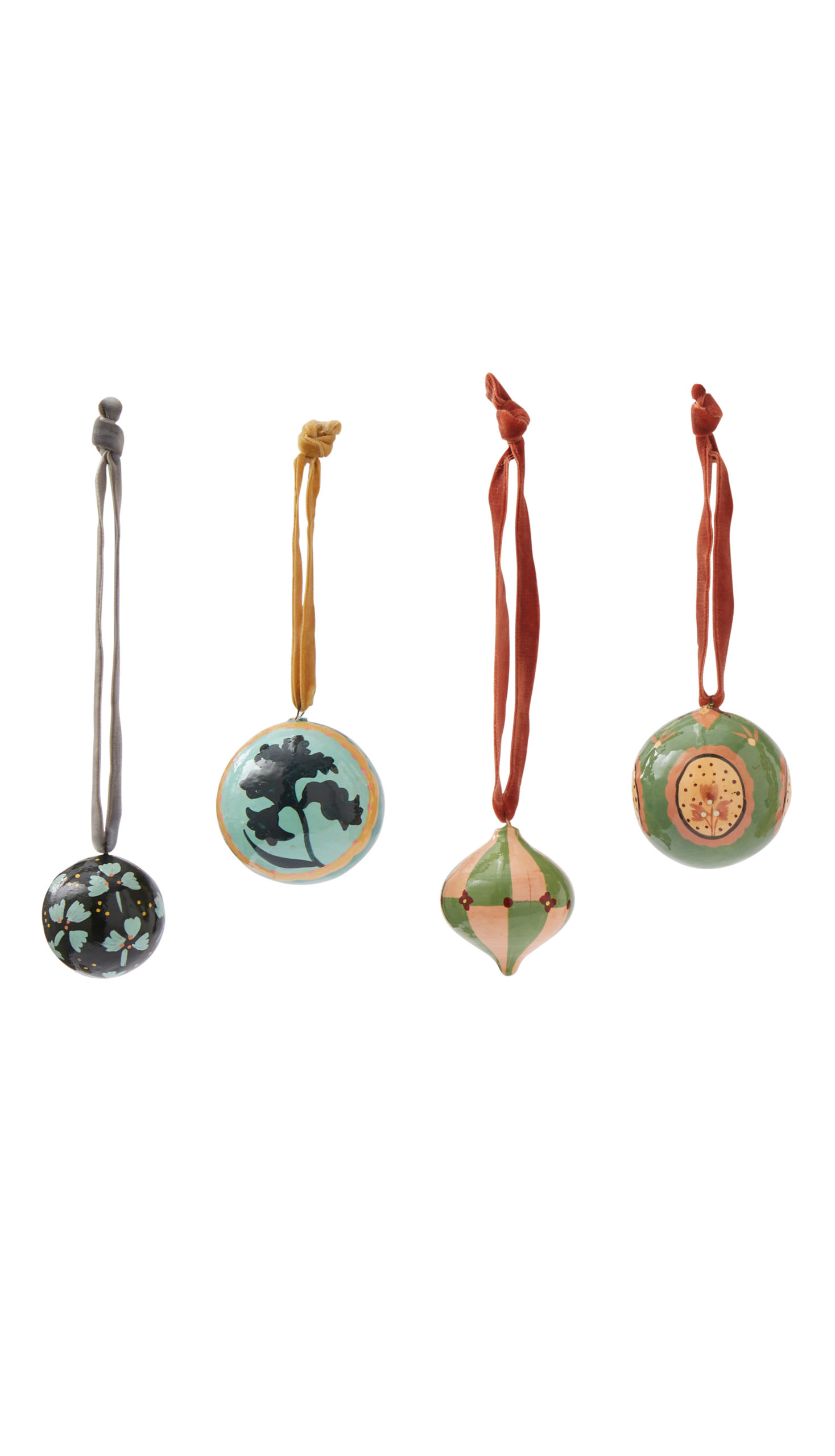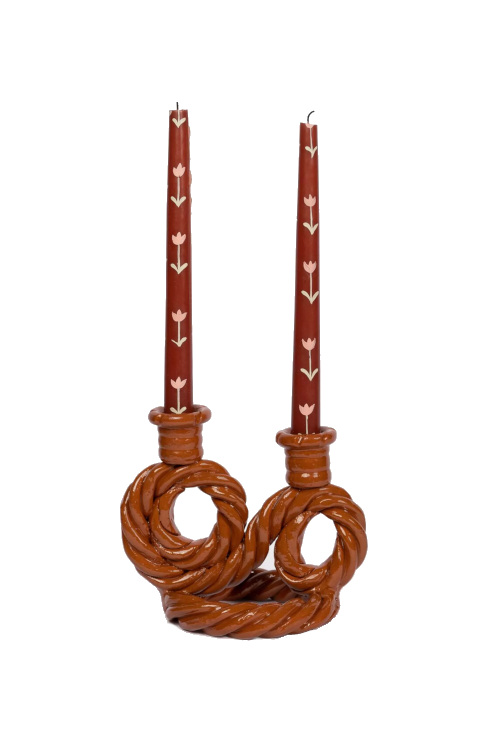
I Travelled By Train From Brighton To The Taj Mahal – Here’s What Happened
By
6 months ago
Detours, deserts and the Dalai Lama: here’s what happened on Nick Pulley’s Eurasian odyssey
In October 2024, Nick Pulley, founder of B Corp certified leading tour operator Selective Asia, set off on a no-fly adventure, journeying from his hometown in Brighton to India’s world-famous Taj Mahal – entirely by rail. Passing through the likes of Prague, Vienna, Budapest, Brasov and Bratislava, Istanbul and Cappadocia, Tatvan, Van, Iran and Pakistan, it was certainly no mean feat. Here Nick tells C&TH the whole story.
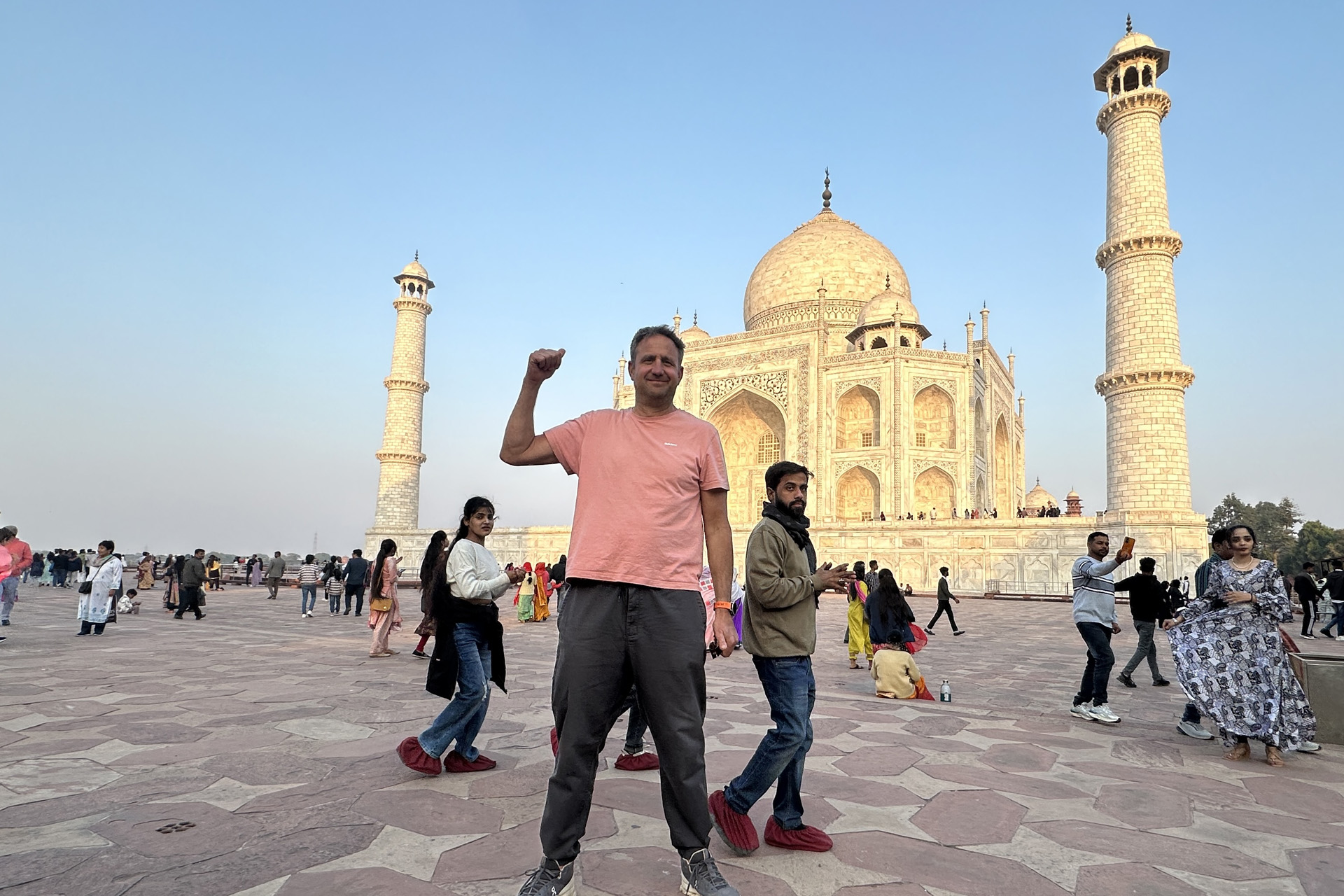
Nick outside the Taj Mahal
Nick Pulley: Brighton To The Taj Mahal By Train
Good travel, like many of the best things in life, often happens in the unscripted moments: the unplanned detours and the quiet surprises that emerge when you step beyond familiarity. Sometimes that means placing your fate in the hands of strangers, surrendering to the unknown, and seeing where the path leads you. It can require pushing your own boundaries and trusting a little more in serendipity.
For me, that meant swapping my familiar spot on Brighton’s seafront for a two-month train odyssey to the Taj Mahal. The rewards? Beyond anything I could have ever envisaged.
Throughout the trip, I was approached by people in the street, offered food and drink, and invited into people’s homes. I was shown immense kindness many times in Iranian railway stations, and people shared their meals with me on trains in Pakistan. In Tehran, an elderly man emerged from the crowd and asked where I was from. He told me he didn’t care much for the British government, nor did he like his own, but he liked British people, and I was welcome. Then he kissed me on the cheek and disappeared back into the crowd.
Each of these fleeting moments, warm conversations and cross-cultural connections had a profound effect on me.
As I set off from Brighton train station on a dark, wet October morning, I, of course, knew nothing of these special times ahead. The weeks leading up to departure day took place against the backdrop of a heated public stand-off between Iran and Israel, and I was completely focused on the challenges of entering Iran, and whether I should even try. So all-consuming was it that I didn’t have the headspace to dwell on the day-to-day realities of my trip, or envisage those lighter moments that would end up being my most cherished memories.
The Spark
So how did this madcap idea make it out of my head and into motion? Like many of Life’s Big Things, it started with one simple question: can it be done? Could I travel from the UK to southern Asia without flying? What would this sort of long-distance responsible travel really look like?
I’ve always loved travel and adventure. As the founder and CEO of B Corp certified specialist tour operator Selective Asia, I dedicate my days to connecting people with Asia in meaningful ways. It’s my passion. As I approached a milestone birthday, and Selective Asia’s 20th anniversary, it felt like the perfect moment to do something big. I needed a challenge beyond my usual fun-size adventures; to cut away the safety net and push myself further.
My initial thoughts took on a life of their own and, before I knew it, I was deciding on destinations, calculating transport links, and plotting the route of an epic journey. I had a few estimates – about 13,000 km of railtrack, and 40-ish trains to link them – and two months to reach my end point: the Taj Mahal.
Language barriers? Check. Visa complexities and secretive states? Oh yes. Sleep deprivation and uncertainty? Bring it on.
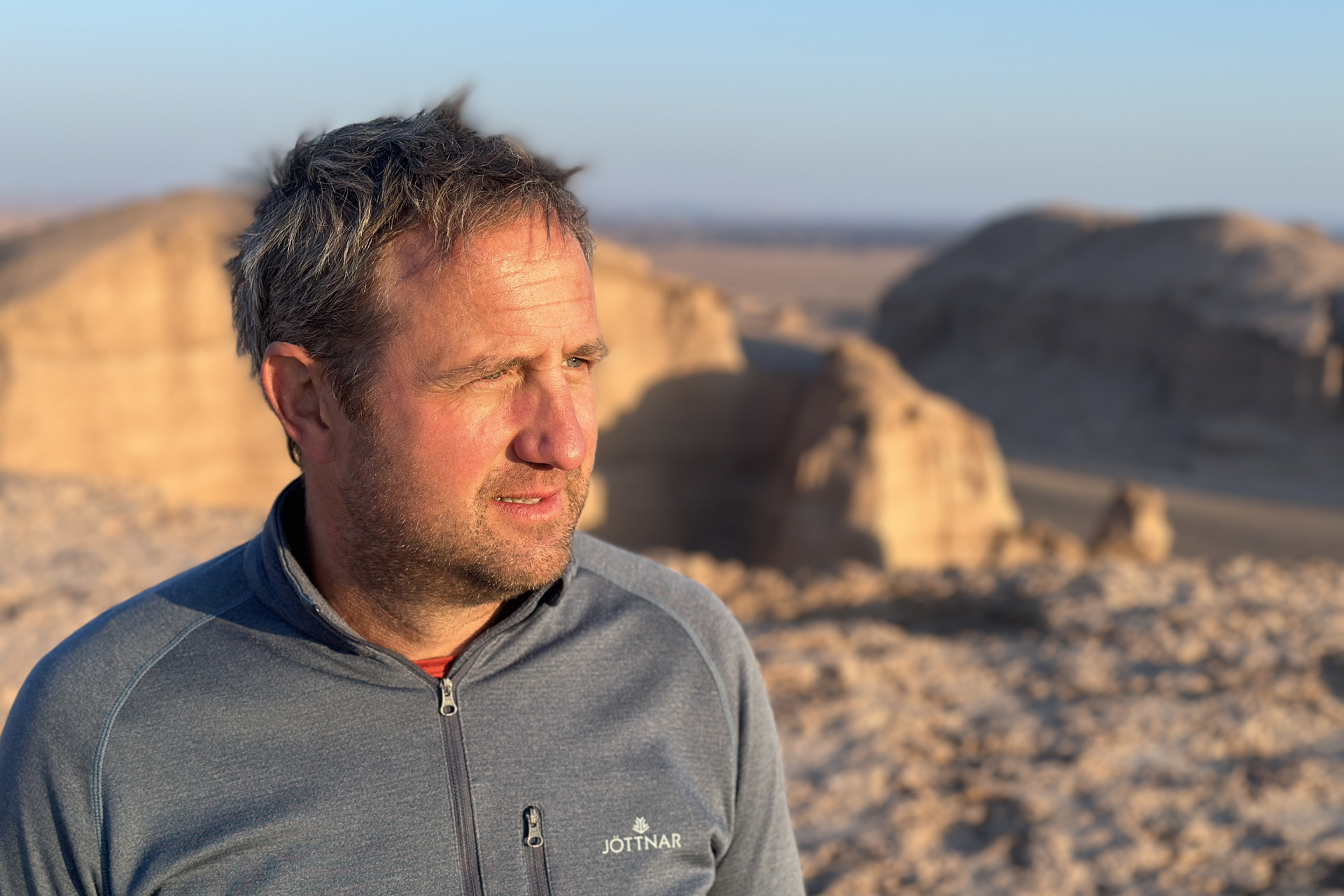
Nick in the desert
Why Travel By Train?
Along with my default geo-political inquisitiveness, and my thirst for adventure, sustainability was undoubtedly the driving force. Responsible travel is a personal passion and a focus of my day-to-day role, so exploring the realities of taking a sustainable route to one of Selective Asia’s destinations was very appealing. Exact figures vary, but train travel’s carbon footprint is roughly a third of flying. So, it’s progress – undoubtedly.
Train travel also fulfilled my urge to step back towards a style of travel I love to read about. When Paul Theroux set out on his Great Railway Bazaar in the ‘70s, there was no internet, just timetable books and hard-won word-of-mouth. While I couldn’t replicate that rawness of his venture entirely, the wealth of information at our fingertips today gave me the opportunity to push myself further in a more compact timeframe.
Then there’s the beauty of overland rail travel itself. Taking the time to travel by train, observing the ever-changing panoramas from the window, and watching cultures slowly shift is tangible, visceral. Crossing borders by land feels different: you’re connected to the distance and space of a journey in a way you just aren’t by air. You’re gradually introduced to each place, rather than landing in the epicenter.
I also wanted to take the opportunity to hear the voices of the people on the ground for myself, especially in those misunderstood places. I wanted the chance to challenge or confirm the narratives provided by our own media and institutional sources.
The Takeaways
A funny thing about travel is that the points you expect to be the highlights rarely are. This journey only amplified that further.
Wherever we travel, there are usually a few key places or events we look forward to the most. There were many such focal points during my journey, and some places that intrigued me more than others. The Karakoram mountains, the Lut Desert, the crossing into Asia – just to name a few. I took in many big-ticket landmarks and some of Eastern Europe’s finest sites, from the grandeur of Vienna to the architectural gems of Budapest.
However, once I got going, I realised that embracing slow travel meant giving each day the attention it deserved, and not letting my mind race ahead to the next ‘big moment’. It wasn’t easy – it was a muscle I had to flex constantly – but it enriched the trip beyond measure. When I brought my focus into the present, I noticed the small things. I could better experience the subtle cultural shifts; watching, hearing, and tasting the gradual transition from Western to Eastern Europe, then from Europe into Western Asia, and finally to Southern Asia.
What lingers in my memory most are the softer moments. The winding journeys through the Austrian Alps; a quiet day crossing the Bulgarian lowlands. The Sheikh Lotfollah Mosque in Isfahan and the intricate irrigation systems of Yazd were mesmerising, but watching the sunrise over the Iranian desert from a restaurant carriage has stayed more vividly in my mind.
Alongside the extensive planning, I knew I needed to leave space for happenstance and unexpected turns. Pack your days too tightly, and you miss out on those moments of chance. In Bulgaria, one unexpected chance meeting led me to throwing away my overnight bus ticket and boarding a night train to Türkiye, which I had been led to believe didn’t exist just a few days earlier.
If I had planned every detail too rigidly, I couldn’t have taken a detour to Dharamshala and been in the right place at just the right time (9.37am, 4 December 2024) to receive a blessing from His Holiness the Dalai Lama. I still have to pinch myself about that one.
Travel also teaches us to embrace, or at least accept, the lows in order to appreciate the highs. Crossing from Iran into Pakistan, eager to explore my penultimate destination, my journey came to a grinding halt when I was held up in a government compound for nearly a week. It was a testing time: unnerving at first, then more frustrating. Yet the guards were wonderful people, and despite not sharing a word of common language, we formed an unexpected bond. I was almost sad to leave. Almost. It might sound strange to describe that experience, and the subsequent military escort to Quetta, as a highlight, but going through it was incredibly powerful.
Since my return, friends have asked how I fared with 250 hours on board trains. It was something that I had been equally curious about before I’d set off, as patience for train travel is not something I’m usually associated with. However, my greatest area of personal growth was learning to let the journey become the destination, and to properly embrace that concept.
Today, we are so often in a rush to reach each end-point that we forget how meaningful, integral, and fun getting there can be. All of that changed for me with this trip. The views from countless windows, the shifting landscapes, the changing light – all of it became part of the experience. Within days of leaving the UK, I was thinking less about the next stop and more about the next journey, enticed by the unknowns it would bring. Tight connections became an exciting challenge. Station food, places I passed through, and people I met along the way became integral to the adventure.
In the end, this trip reminded me of why I travel: to challenge myself, to stretch beyond my comfort zone, and to see the world beyond the headlines, beyond guidebooks, and beyond the noise. Travel, at its best, connects us, and in today’s world, that connection has never felt more vital.
Nick Pulley is the founder and CEO of Selective Asia, a B Corp certified specialist tour operator offering tailor-made, meaningful journeys with a positive impact. Find out more and book your own adventure at selectiveasia.com


